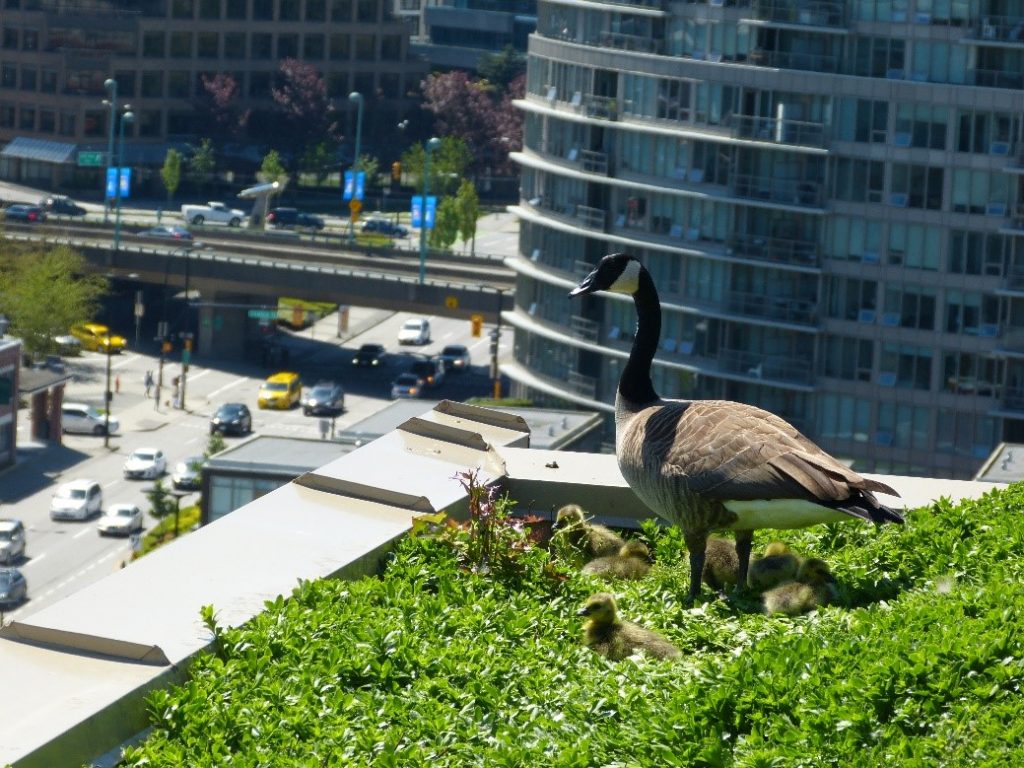Support Us
Since 1979 more than 140,000 animals have been treated by Wildlife Rescue.
Thanks to the support of individuals like you, Wildlife Rescue can provide a lifeline for animals in distress.
Spring is one of the busiest times of the year for Wildlife Rescue especially with “Rooftop Rescues”. Last year, the rescue team was managing 10 rescues a day to save fluffy little goslings and bringing them to safety with their families.
While nesting on rooftops seems like a safe place for goslings, it can be very dangerous for young geese. To make sure goslings are not harmed by rooftop nesting, the best thing we can do is prevent it!

Canada Goose nest on top of a roof in Vancouver, BC. Spring 2018.
Known for their long necks, webbed feet, and brown backs, these birds can be found feeding and grazing in open fields and lawns where they will eat berries, seeds, grains, and leaves. This openness that Canadian Geese seek is commonly found in rooftops for nesting since they can provide a place near water that gives a raised and flat view to look out for predators.
Of course, nesting on rooftops can be very dangerous for newly hatched young goslings. When parents nest on rooftops, it can leave the young stranded, since the goslings are not prepared to jump from such a large height. This leaves the families stranded with young geese to take care of.
To make sure young goslings are not stranded, we can prevent rooftop nesting before it happens by…
Making it less habitable.
Geese are always on the lookout for the best spot for their young, so changing up the roof so it does not fit their criteria is the best way to prevent nesting. Changing the landscape (ex. Planting bushes and shrubs, tall grasses, and even trees) will ruin the flatness for the geese, making the roofless habitable.
Getting rid of (or covering up) water sources.
Geese love water! By making sure that you cover up any rooftop pools, puddles, or ponds, geese will be less likely to choose your roof. Whether it’s tarps to cover up pools when they aren’t in use or simply getting rid of puddles, making sure there is no water is one easy way to make sure geese avoid your roof!
Using “scare” tactics.
Roofs that have bird reflective tape/stickers, motion-detector lights, and even scarecrows will make your roof a less suitable place to nest, since geese may think there are predators nearby and want to avoid potential confrontation.
Of course, geese may nest on your roof anyway – but there are many ways to make sure these birds get back to the ground safely. If you see a young gosling on your roof, consider the following questions:
If you answered yes to any of these questions, please contact our Support Centre for assistance.
Of course, if you see a gosling that has exposed bones or blood, bugs or insects covering it, no feathers, or a gosling that is sleeping, human intervention is required. Please contact our Support Centre for assistance.